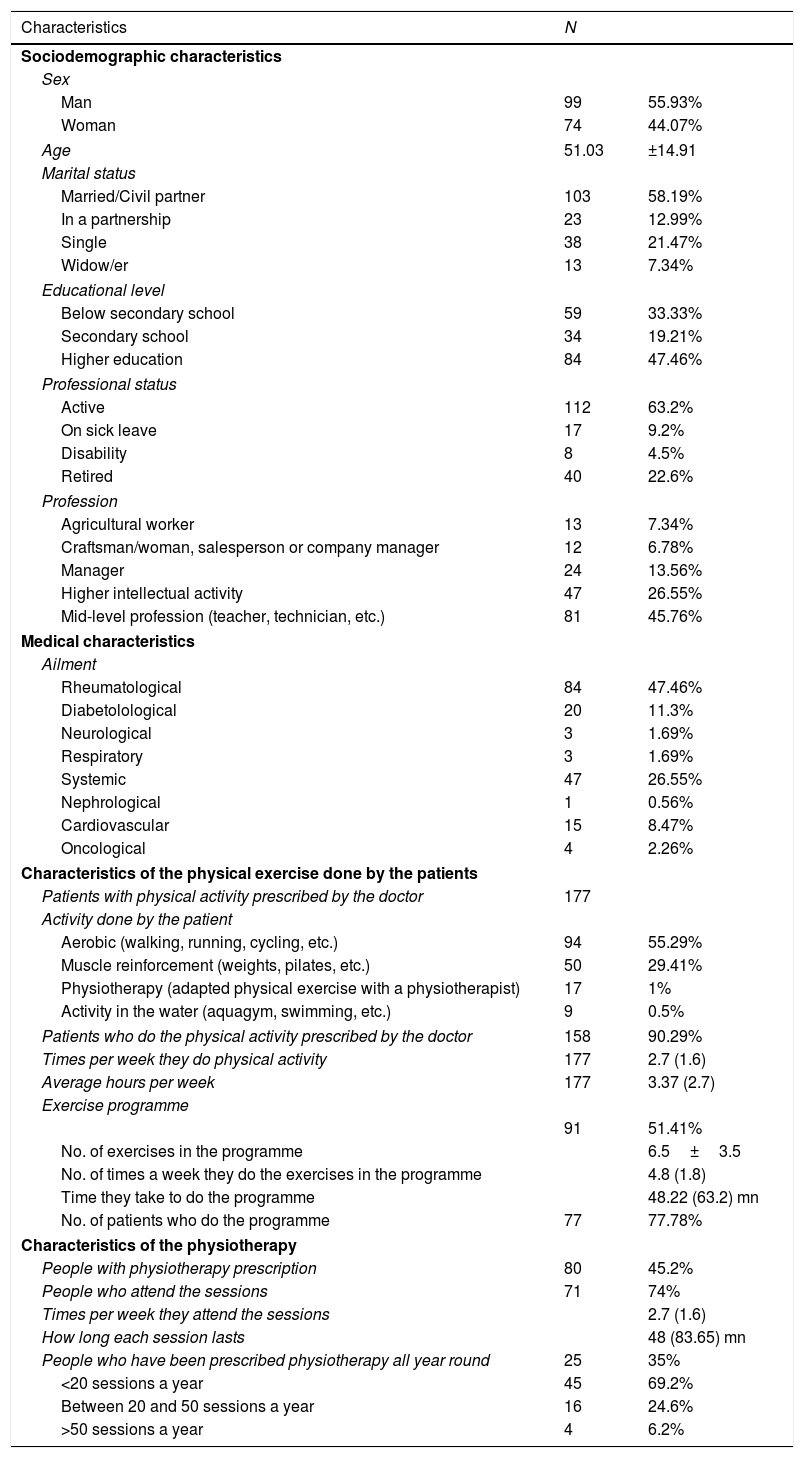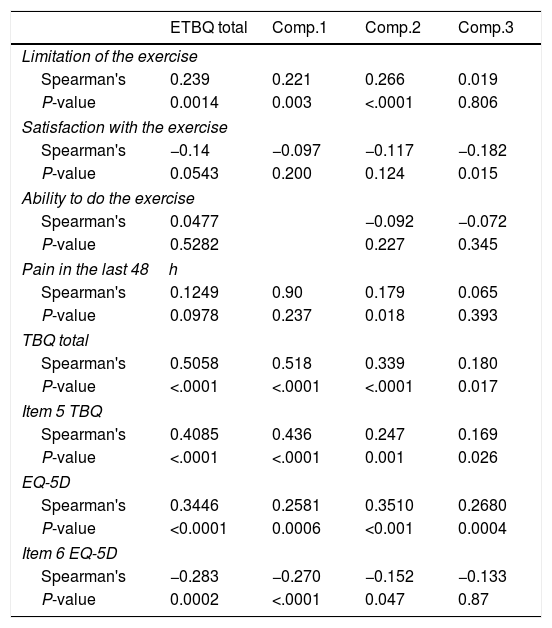To validate the Spanish version of the Exercise Therapy Burden Questionnaire (ETBQ) for the assessment of barriers associated to doing physical therapy for the treatment of chronic ailments.
Patientes and methodsA sample of 177 patients, 55.93% men and 44.07% women, with an average age of 51.03±14.91 was recruited. The reliability of the questionnaire was tested with Cronbach's alpha coefficient, and the validity of the instrument was assessed through the divergent validation process and factor analysis.
ResultsThe factor analysis was different to the original questionnaire, composed of a dimension, in this case determined three dimensions: (1) General limitations for doing physical exercise. (2) Physical limitations for doing physical exercise. (3) Limitations caused by the patients’ predisposition to their exercises. The reliability of the test–retest was measured through the intraclass correlation coefficient (ICC) and the Bland–Altman plot. Cronbach's alpha was 0.8715 for the total ETBQ. The ICC of the test-retest was 0.745 and the Bland–Altman plot showed no systematic trend.
ConclusionWe have obtained the translated version in Spanish of the ETBQ questionnaire.
Validar la versión en español del cuestionario «Exercise Therapy Burden Questionnaire» (ETBQ) para la evaluación de las barreras asociadas a la realización de terapia física para el tratamiento de enfermedades crónicas.
Pacientes y métodos Se reunió una muestra de 177 pacientes, con un 55,93% de varones y un 44,07% de mujeres, y una edad media de 51,03±14,91. Se probó la fiabilidad del cuestionario mediante el coeficiente alfa de Cronbach, y se evaluó la validez del instrumento a través del proceso de validación divergente y el análisis factorial.
ResultadosEl análisis factorial fue diferente al del cuestionario original, que se componía de una dimensión, y en este caso determinaba 3 dimensiones: 1) Limitaciones generales a la práctica de ejercicio físico; 2) Limitaciones físicas para la realización de ejercicio físico, y 3) Limitaciones causadas por la predisposición de los pacientes a la práctica de ejercicio. La fiabilidad de la prueba-reprueba se midió mediante el coeficiente de correlación intraclase (ICC) y la gráfica de Bland-Altman. El valor alfa de Cronbach fue de 0,8715 para ETBQ total. El ICC para la prueba-reprueba fue de 0,745, y la gráfica de Bland-Altman no reflejó ninguna tendencia sistemática.
ConclusiónHemos obtenido la versión traducida al español del cuestionario ETBQ.









